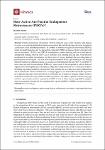How Active Are Porcine Endogenous Retroviruses (PERVs)?
Denner, Joachim
Porcine endogenous retroviruses (PERVs) represent a risk factor if porcine cells, tissues, or organs were to be transplanted into human recipients to alleviate the shortage of human transplants; a procedure called xenotransplantation. In contrast to human endogenous retroviruses (HERVs), which are mostly defective and not replication-competent, PERVs are released from normal pig cells and are infectious. PERV-A and PERV-B are polytropic viruses infecting cells of several species, among them humans; whereas PERV-C is an ecotropic virus infecting only pig cells. Virus infection was shown in co-culture experiments, but also in vivo, in the pig, leading to de novo integration of proviruses in certain organs. This was shown by measurement of the copy number per cell, finding different numbers in different organs. In addition, recombinations between PERV-A and PERV-C were observed and the recombinant PERV-A/C were found to be integrated in cells of different organs, but not in the germ line of the animals. Here, the evidence for such in vivo activities of PERVs, including expression as mRNA, protein and virus particles, de novo infection and recombination, will be summarised. These activities make screening of pigs for provirus number and PERV expression level difficult, especially when only blood or ear biopsies are available for analysis. Highly sensitive methods to measure the copy number and the expression level will be required when selecting pigs with low copy number and low expression of PERV as well as when inactivating PERVs using the clustered regularly interspaced short palindromic repeats (CRISPR)/CRISPR-associated nuclease (CRISPR/Cas) technology.
No license information

